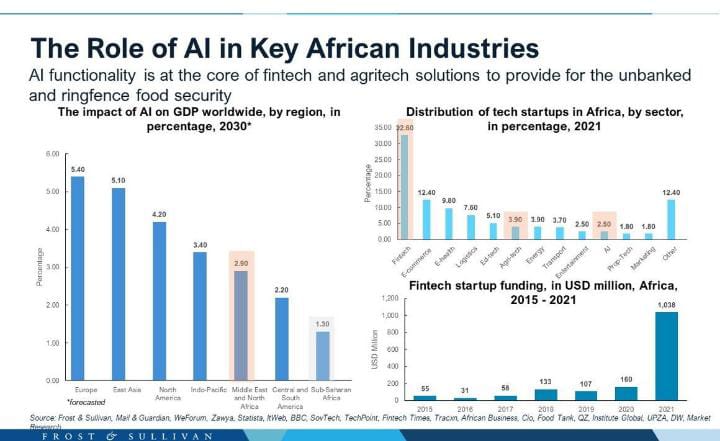
If you think African market research still begins and ends with a clipboard and a street-intercept survey, it’s time to update the mental model. Yes, robust surveys remain essential. But the continent’s digital rails (mobile connectivity, mobile money, and social platforms) are unlocking real-time, high-resolution insight that classic methods can’t deliver on their own. The future isn’t “surveys vs. AI.” It’s surveys + AI + alternative data, orchestrated responsibly.
What’s changing (and why it matters)
Three structural shifts are reshaping insight generation across African markets:
- Mobile-first reach. Sub-Saharan Africa continues to add mobile internet users while a large “usage gap” persists. This means there’s headroom for growth and new segments to reach. Planning research without a mobile lens is like mapping a city without its roads.
- Digital payments as behavioural sensors. Mobile money is now woven into daily life across many markets, offering privacy-preserving, aggregated signals about spending flows, merchant activity, and seasonality. Recent GSMA reports show sustained growth in accounts and transaction values, with West Africa a major engine.
- Language access is breaking open. Low-resource African languages have historically been a bottleneck for NLP and social listening. That’s changing quickly: Google expanded Translate by 110 new languages in 2024, about a quarter from Africa, broadening machine-assisted comprehension and moderation across local tongues. Community research hubs such as Masakhane are accelerating quality and cultural fit.
From lagging indicators to live signals
Traditional nationally representative surveys still answer the hardest “why” questions. But they’re expensive, episodic, and slow. AI helps stitch in faster “what’s happening” signals:
- Geospatial & satellite data (e.g., nighttime lights) can proxy local economic activity, giving you early reads on growth pockets, infrastructure shocks, and recovery after disruptions.
- Mobile money telemetry (aggregated, anonymised) reveals merchant enablement, remittance corridors, and digitisation trends. These are vital for sizing opportunities and forecasting cash flow risk.
- Multilingual social listening, now more feasible across Swahili, Hausa, Wolof, Yoruba and beyond, surfaces sentiment and unmet needs in near real time. The technical leap isn’t just volume; it’s coverage across languages that were previously off-grid for machine analysis.
Use live signals to spot what’s moving, then deploy targeted surveys (or qualitative work) to explain the “why.” This blended approach lowers cost, increases cadence, and reduces blind spots.
What “AI-powered” really looks like on the ground
Beyond buzzwords, here are practical patterns we see gaining traction:
- Demand sensing: Fuse POS data where available with mobile money trends and geospatial indicators to detect micro-seasonality (e.g., pre-payday troughs, festival spikes).
- Segment discovery: Unsupervised clustering on behavioural data (purchase frequency, basket mix, agent proximity) can reveal segments that demographics alone miss, then validate them with short mobile surveys.
- Creative and message testing at scale: Generate variants, translate into local languages, then A/B test across channels. NLP summarises feedback and flags cultural nuances that might otherwise slip through.
- Shelf and outlet intelligence: Computer vision on field photos (even from mid-range smartphones) can measure availability and share-of-shelf without tedious manual tallies—again, with survey follow-ups to understand causes.
Guardrails: ethics, privacy, trust
More data means more responsibility. The region’s regulatory landscape is maturing fast. South Africa’s POPIA sets comprehensive rules and established an Information Regulator; Kenya has a Data Protection Act (2019); and Nigeria enacted the Nigeria Data Protection Act (2023). All of these points toward stronger, rights-based processing and accountability. At a continental level, the AU Convention on Cyber Security and Personal Data Protection provides a policy umbrella for member states. For multinationals, treating the strictest regime you operate under as your baseline is the safest path.
Design for consent, minimisation, aggregation/anonymisation, and auditability. When using LLMs or third-party AI services, conduct data-processing and cross-border transfer due diligence, then document it. Regulators will ask.
Don’t throw out the survey
Surveys aren’t going away; they’re getting smarter:
- Adaptive sampling: AI helps detect bias (e.g., urban skew) and recommends oversamples in underrepresented districts or language groups.
- Multimodal questionnaires: Mix voice, text, WhatsApp, and USSD to include respondents with low literacy or expensive data plans.
- Faster synthesis: LLMs draft toplines from tabulations and verbatims, while humans validate nuance and design executive narratives.
- Benchmark continuity: Keep long-running indicators (trust, satisfaction, NPS-like metrics) stable so you can calibrate novel signals against known baselines from networks like Afrobarometer.
Bottom line, Africa’s insight stack is leaping from static snapshots to living, multilingual, ethically sourced intelligence. The businesses that win won’t be those with the fanciest model, but those that blend human judgment, rigorous surveys, and AI-ready data—and do it with cultural fluency and trust at the core.